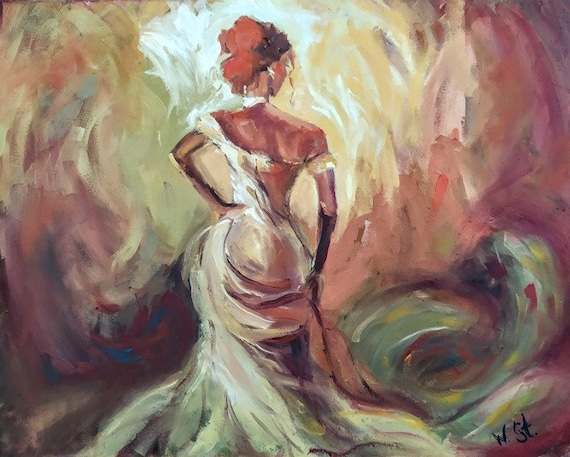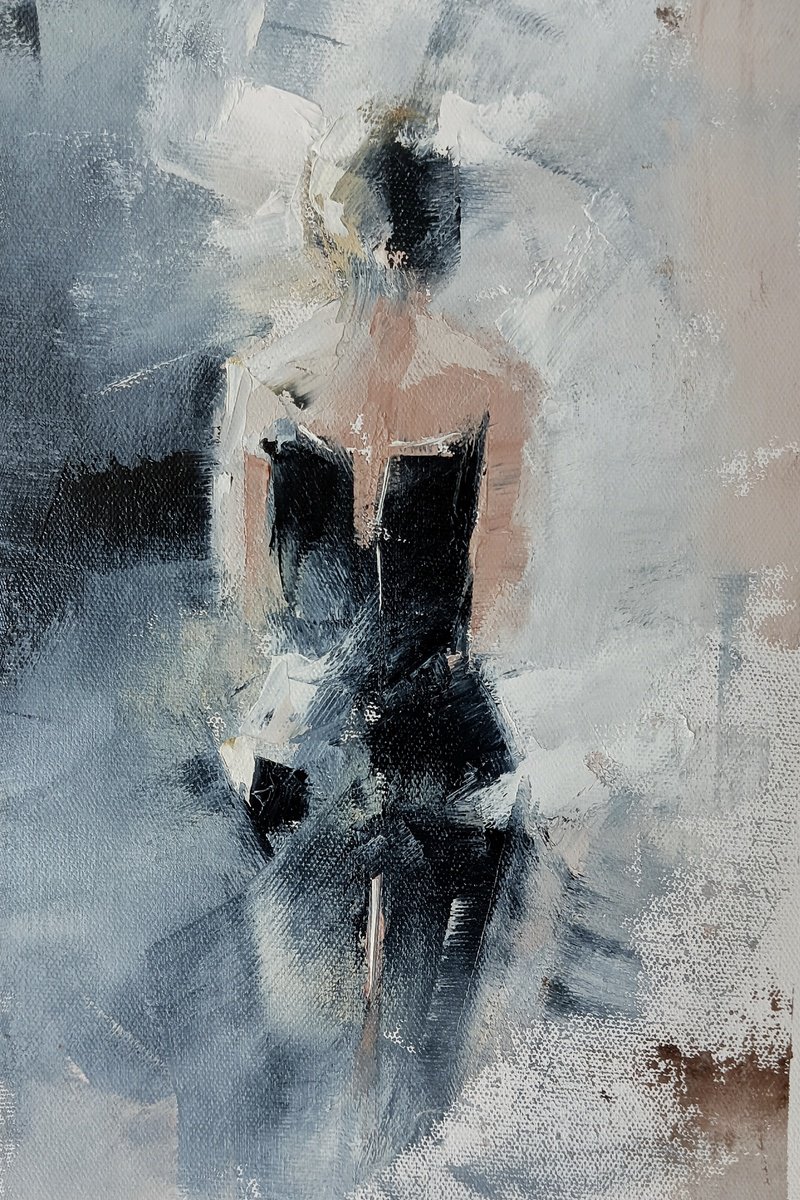The Advancement of Figurative Oil Paint: Understanding Its Historic Significance and Modern Interpretations
The advancement of figurative oil paint serves as an engaging lens via which to analyze the interplay in between artistic expression and historical context. Contemporary artists, drawing from this abundant heritage, are currently reinterpreting the human figure in means that test conventional narratives.
Origins of Metaphorical Oil Paint
The beginnings of metaphorical oil painting can be mapped back to the very early Renaissance in Europe, especially in the 15th century. The advancement of oil paint enabled for greater deepness of shade and detail, enhancing the realism and vibrancy of their work.

In this transformative period, numbers were often depicted within contextually abundant settings, showcasing not just their physical attributes however also their mental states. Leaders such as Jan van Eyck and Titian used the tool's versatility, employing layering strategies to achieve luminosity and texture. This innovation facilitated the portrayal of detailed textiles and the nuances of complexion, adding to the development of portraiture and narrative scenes.
In Addition, the Renaissance focus on humanism fostered an admiration for individualism, which subsequently influenced artists to create even more vibrant and relatable figures - figurative oil painting. Because of this, figurative oil painting became an effective lorry for storytelling and emotional involvement, preparing for future artistic motions and designs
Trick Historic Activities
Substantial historic activities have formed the evolution of figurative oil paint, each contributing unique ideologies and methods that increased the medium's opportunities. The Renaissance noted a turning point, stressing realistic look and the human form, with musicians like Leonardo da Vinci and Michelangelo pressing the limits of physiological accuracy and viewpoint. Following this, the Baroque period brought dramatic contrasts of light and shadow, exemplified by Caravaggio, who instilled religious motifs with intense emotionality.
The 19th century presented Romanticism and Realistic look, where artists such as Delacroix and Courbet challenged timeless perfects, concentrating on individual expression and daily life. The arrival of Impressionism further changed the medium by stressing the results of light and shade, leading to a separation from conventional representation.
In the very early 20th century, motions like Expressionism and Cubism redefined metaphorical paint with abstraction and the exploration of emotional depth. Each of these activities not only showed the societal adjustments of their times but also prepared for contemporary interpretations. The interaction between these historical activities has actually produced an abundant tapestry of approaches and styles, influencing contemporary musicians in their quest of recording the human experience on canvas.
Techniques and Materials Advancement

Throughout the Baroque duration, strategies such as chiaroscuro and sfumato emerged, boosting the emotional resonance of metaphorical make-ups. Musicians began to explore lusters and impasto, adjusting structure and luminance. By the 19th century, developments like using pre-mixed paints in tubes revolutionized ease of access, permitting musicians to repaint en plein air and record the fleeting impacts of light.
The 20th century witnessed the intro of synthetic pigments and mediums, which increased discover this the palette and modified the uniformity of oil paints. Additionally, the expedition of brand-new application methods, such as scheme blades and brushes of varying stiffness, more varied imaginative expression. Collectively, these innovations show the progressing partnership between products, strategies, and the creative vision inherent in figurative oil paint.

Contemporary Analyses
Contemporary analyses of metaphorical oil paint mirror a dynamic discussion in between custom and innovation, where artists challenge established norms and check out varied motifs. This development materializes in numerous methods, as contemporary artists blend timeless methods with modern principles, typically addressing social, political, and personal narratives.
Several specialists draw ideas from historical works, yet they infuse their pieces with modern perspectives, utilizing the human type as an automobile for commentary on identification, society, and sex. Artists increasingly explore abstraction, distortion, and multimedias, which permits a broader analysis of the number and its context.
Moreover, the use of vibrant shade combinations and unusual structures commonly serves to interfere with traditional watching experiences, provoking vital engagement from audiences. This change in focus prolongs beyond visual appeals; it shows an expanding understanding of the complexities of human experience in an interconnected globe.
As figurative oil paint remains to evolve, it continues to be an important tool for discovering the nuances of contemporary life, personifying both a respect for heritage and a commitment to progressive idea. The result is an abundant tapestry of expression that resonates with the complexities of the modern human condition.
Influence On Modern Art
The impact of metaphorical oil paint on modern art is extensive, as it has constantly motivated a myriad of creative motions and methods throughout the 20th and 21st centuries. From Expressionism to Surrealism and past, the expedition of the human figure has actually continued to be a central style, enabling artists to communicate complex feelings and narratives. This emphasis on metaphorical depiction has brought about a re-examination of traditional techniques, leading to cutting-edge approaches that blend realistic look with abstraction.
Furthermore, modern artists have actually welcomed metaphorical oil paint as a way to look at more info resolve social and political problems, using the tool to challenge perceptions of identity, society, and gender. The renewal of interest in metaphorical work in current years mirrors a wishing for connection in an increasingly digital world, where human experience and feeling are critical.
Additionally, the discussion between metaphorical oil paint and contemporary art appears in the jobs of artists such as Kehinde Wiley and Jenny Saville, that make use of historical referrals while instilling their items with contemporary relevance. Inevitably, figurative oil paint continues to form and redefine contemporary artistic expression, underscoring its enduring value in the art world.
Conclusion
The advancement of metaphorical oil painting highlights its historic relevance and adaptability across various artistic movements. Ultimately, figurative oil painting continues to be an important medium for checking out get redirected here the human experience, resonating profoundly in today's electronic landscape.
The advancement of metaphorical oil paint offers as an engaging lens with which to analyze the interplay in between creative expression and historical context.Substantial historical motions have formed the development of figurative oil painting, each adding special philosophies and strategies that expanded the medium's possibilities.As historic activities shaped the trajectory of figurative oil paint, the products and techniques used by musicians have also gone through substantial improvements. figurative oil painting.The influence of metaphorical oil paint on modern art is profound, as it has actually continually motivated a myriad of creative movements and practices throughout the 20th and 21st centuries.The development of figurative oil painting highlights its historic importance and adaptability across various artistic motions